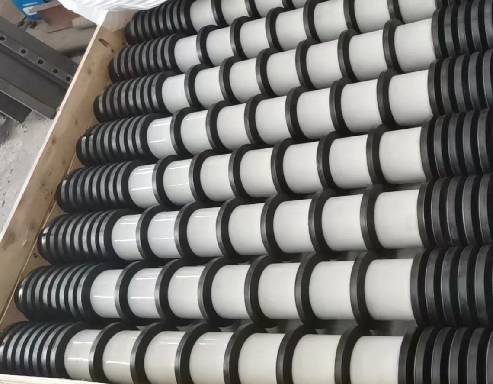 Afrikaans
Afrikaans  Albanian
Albanian  Amharic
Amharic  Arabic
Arabic  Armenian
Armenian  Azerbaijani
Azerbaijani  Basque
Basque  Belarusian
Belarusian  Bengali
Bengali  Bosnian
Bosnian  Bulgarian
Bulgarian  Catalan
Catalan  Cebuano
Cebuano  Corsican
Corsican  Croatian
Croatian  Czech
Czech  Danish
Danish  Dutch
Dutch  English
English  Esperanto
Esperanto  Estonian
Estonian  Finnish
Finnish  French
French  Frisian
Frisian  Galician
Galician  Georgian
Georgian  German
German  Greek
Greek  Gujarati
Gujarati  Haitian Creole
Haitian Creole  hausa
hausa  hawaiian
hawaiian  Hebrew
Hebrew  Hindi
Hindi  Miao
Miao  Hungarian
Hungarian  Icelandic
Icelandic  igbo
igbo  Indonesian
Indonesian  irish
irish  Italian
Italian  Japanese
Japanese  Javanese
Javanese  Kannada
Kannada  kazakh
kazakh  Khmer
Khmer  Rwandese
Rwandese  Korean
Korean  Kurdish
Kurdish  Kyrgyz
Kyrgyz  Lao
Lao  Latin
Latin  Latvian
Latvian  Lithuanian
Lithuanian  Luxembourgish
Luxembourgish  Macedonian
Macedonian  Malgashi
Malgashi  Malay
Malay  Malayalam
Malayalam  Maltese
Maltese  Maori
Maori  Marathi
Marathi  Mongolian
Mongolian  Myanmar
Myanmar  Nepali
Nepali  Norwegian
Norwegian  Norwegian
Norwegian  Occitan
Occitan  Pashto
Pashto  Persian
Persian  Polish
Polish  Portuguese
Portuguese  Punjabi
Punjabi  Romanian
Romanian  Russian
Russian  Samoan
Samoan  Scottish Gaelic
Scottish Gaelic  Serbian
Serbian  Sesotho
Sesotho  Shona
Shona  Sindhi
Sindhi  Sinhala
Sinhala  Slovak
Slovak  Slovenian
Slovenian  Somali
Somali  Spanish
Spanish  Sundanese
Sundanese  Swahili
Swahili  Swedish
Swedish  Tagalog
Tagalog  Tajik
Tajik  Tamil
Tamil  Tatar
Tatar  Telugu
Telugu  Thai
Thai  Turkish
Turkish  Turkmen
Turkmen  Ukrainian
Ukrainian  Urdu
Urdu  Uighur
Uighur  Uzbek
Uzbek  Vietnamese
Vietnamese  Welsh
Welsh  Bantu
Bantu  Yiddish
Yiddish  Yoruba
Yoruba  Zulu
Zulu belt conveyor parts and functions
Belt Conveyor Parts and Functions
Belt conveyors are integral components in many industries, serving as vital tools for the transportation of materials. These systems are designed to move goods efficiently across a variety of distances and elevations. Understanding the components and functions of belt conveyors is essential for optimizing their performance, maintenance, and operation. This article will elaborate on the key parts of a belt conveyor and their respective functions.
1. Belt
The belt is the most critical part of a conveyor system. It serves as the surface upon which materials are conveyed. Typically made from rubber, fabric, or a combination of both, the belt must be durable, flexible, and resistant to wear and tear. Depending on the materials being transported, belts can be designed with surface textures or coatings to prevent slippage and ensure material stability.
2. Pulley
Pulleys are cylindrical devices that are crucial for the movement of the conveyor belt. There are usually two types of pulleys the drive pulley and the idler pulley. The drive pulley is powered by a motor, providing the necessary motion to move the belt. The idler pulleys, on the other hand, support the belt and maintain its alignment, ensuring that the conveying surface remains level throughout its operation.
3. Motor
The motor is the power source for the belt conveyor system. Electric motors are commonly used, and they are selected based on the required speed and load capacity of the conveyor. The motor’s role is to drive the pulley, which in turn moves the belt, transporting materials from one point to another efficiently.
4. Frame
belt conveyor parts and functions

The frame provides the structural support for the entire conveyor system. Typically made from steel or aluminum, the frame must be strong enough to handle the load of the materials being transported, as well as the dynamic forces that occur during operation. The design of the frame also allows for different configurations, such as inclined or horizontal setups, depending on the specific application.
5. Idlers
Idlers are rollers that support the belt along its length, reducing friction and allowing the belt to move smoothly. There are various types of idlers, including trough idlers, flat idlers, and return idlers. Trough idlers are typically used to form a V-shaped channel that helps contain loose materials on the belt, while return idlers support the belt when it returns to the drive pulley.
6. Take-Up System
A take-up system is essential for maintaining proper tension in the conveyor belt. It allows for adjustments to be made if the belt stretches over time or if any slippage occurs during operation. Proper tension is crucial for ensuring optimal performance, preventing excessive wear on the belt, and maintaining the alignment of the system.
7. Safety Devices
Safety devices are important components of a belt conveyor system. These devices can include emergency stop buttons, safety guards, and misalignment switches. They ensure that the system operates safely and can be quickly halted in case of emergencies, protecting both the equipment and personnel working nearby.
Conclusion
In summary, understanding the parts and functions of a belt conveyor system is fundamental in ensuring its efficiency and longevity. Each component plays a specific role in the operation, from the belt that transports materials to the motor that powers the system. Regular maintenance and proper handling of these components can prevent costly breakdowns and prolong the life of the conveyor system, making it an indispensable asset in various industrial applications. By investing time in understanding and managing these systems, businesses can enhance productivity and maintain a competitive edge in their respective markets.
-
Revolutionizing Conveyor Reliability with Advanced Rubber Lagging PulleysNewsJul.22,2025
-
Powering Precision and Durability with Expert Manufacturers of Conveyor ComponentsNewsJul.22,2025
-
Optimizing Conveyor Systems with Advanced Conveyor AccessoriesNewsJul.22,2025
-
Maximize Conveyor Efficiency with Quality Conveyor Idler PulleysNewsJul.22,2025
-
Future-Proof Your Conveyor System with High-Performance Polyurethane RollerNewsJul.22,2025
-
Driving Efficiency Forward with Quality Idlers and RollersNewsJul.22,2025





























